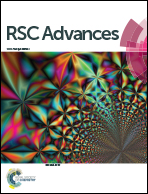Effect of an improved gas diffusion cathode on carbamazepine removal using the electro-Fenton process
Abstract
The aim of this study was to investigate the effect of the diffusion layer of a gas diffusion cathode (GDC) on H2O2 production to enhance carbamazepine removal using the electro-Fenton process. The diffusion layer was made by carbon black and polytetrafluoroethylene with sodium sulfate (Na2SO4) as a pore former. Different ratios of Na2SO4 to carbon black (w/w) (i.e., 0%, 50%, 100%, 150%, and 200%) in the diffusion layer were tested. With an increase of the ratio, the average pore size in the diffusion layer and the electro-activity in the GDC increased simultaneously, which resulted in a higher mass transfer coefficient of oxygen and H2O2 production. In an undivided cell with platinum as the anode and 5.0 g L−1 Na2SO4 as the electrolyte, a maximum H2O2 concentration of 630 mg L−1 was achieved within 120 min in the GDC with the ratio of 150%. With an initial carbamazepine concentration of 50 mg L−1 and a current density of 5.0 mA cm−2, the maximum carbamazepine removal efficiency and rate reached 71% and 35.5 mg L−1 h−1, respectively. The removal rates in this study were much higher than those in the literature (35.5 vs. 0.03–10.0 mg L−1 h−1), mainly attributable to the diffusion layer modified by the pore former, which accelerated oxygen transfer and boosted H2O2 production. The results from this study should be useful to remove carbamazepine from wastewater treatment using the electro-Fenton (EF) process with improvement of pore structure in the diffusion layer of GDC.



 Please wait while we load your content...
Please wait while we load your content...